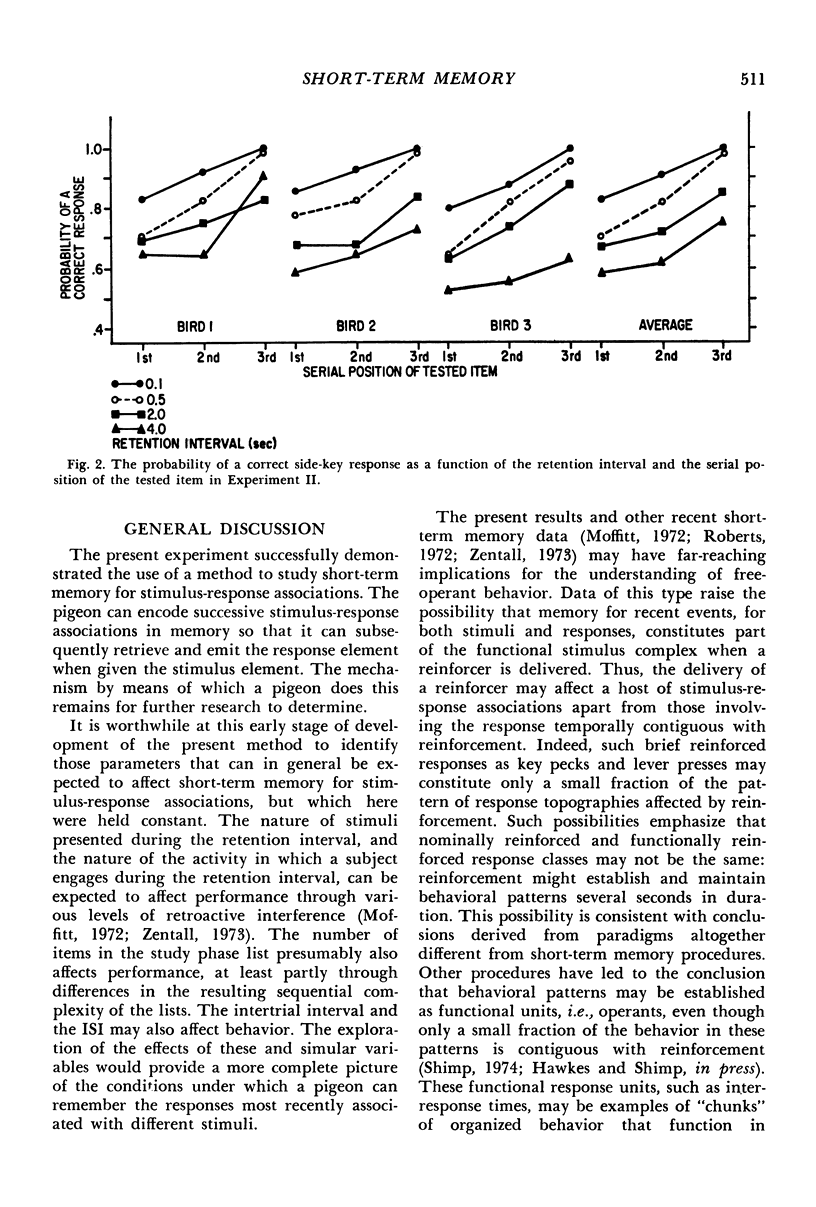Abstract
Three pigeons pecked for food in two experiments in which each trial consisted of two phases: a study and a test phase. The study phase in Experiment I consisted of two stimulus-response pairs presented successively. Each pair consisted of the illumination of a left or right key (the stimulus) and a peck on the lighted side key (the response). The study phase in Experiment II consisted of three such pairs presented successively. A retention interval, varied between 0.1 and 4.0 sec, separated the study phase from the test phase. The test phase of a trial began with the illumination of the center key by one of two (Experiment I) or three (Experiment II) colors. This color was the same as the stimulus element of one of the pairs in the study phase. A reinforcer was presented if a subject then emitted the response element of the indicated stimulus-response pair. The results provide information on the conditions that enable a pigeon to remember the responses most recently emitted in the presence of various stimuli. The results suggest an account of the maintenance of behavior that is temporally noncontiguous with reinforcement.
Full text
PDF





Selected References
These references are in PubMed. This may not be the complete list of references from this article.
- Catania A. C. Self-inhibiting effects of reinforcement. J Exp Anal Behav. 1973 May;19(3):517–526. doi: 10.1901/jeab.1973.19-517. [DOI] [PMC free article] [PubMed] [Google Scholar]
- Shimp C. P. Time allocation and response rate. J Exp Anal Behav. 1974 May;21(3):491–499. doi: 10.1901/jeab.1974.21-491. [DOI] [PMC free article] [PubMed] [Google Scholar]


